Welcome to a world where rustic charm meets modern comfort—welcome to the art of farmhouse decorating! Whether you’re a novice eager to dip your toes into the world of interior design, or a seasoned decorator seeking fresh inspiration, our guide to “10 Tips For Rustic Farmhouse Decorating Ideas” promises to be your trusty companion. We’re here to ignite your creativity and transform your space into a warm, inviting haven that echoes the simplicity and elegance of country living.
In this carefully curated list, you’ll discover valuable ideas that blend practicality with style, ensuring your home is both beautiful and functional. From selecting the perfect reclaimed wood pieces to mastering the art of mixing textures, these tips are crafted to empower you with the confidence to turn your decorating dreams into reality. Embrace the joy of creating spaces that not only look stunning but also feel like a true reflection of your personality and lifestyle. With these techniques, you’ll find yourself effortlessly weaving together elements that exude timeless charm and cozy sophistication, making your home a cherished retreat for all who enter.
Incorporate Reclaimed Wood Accents
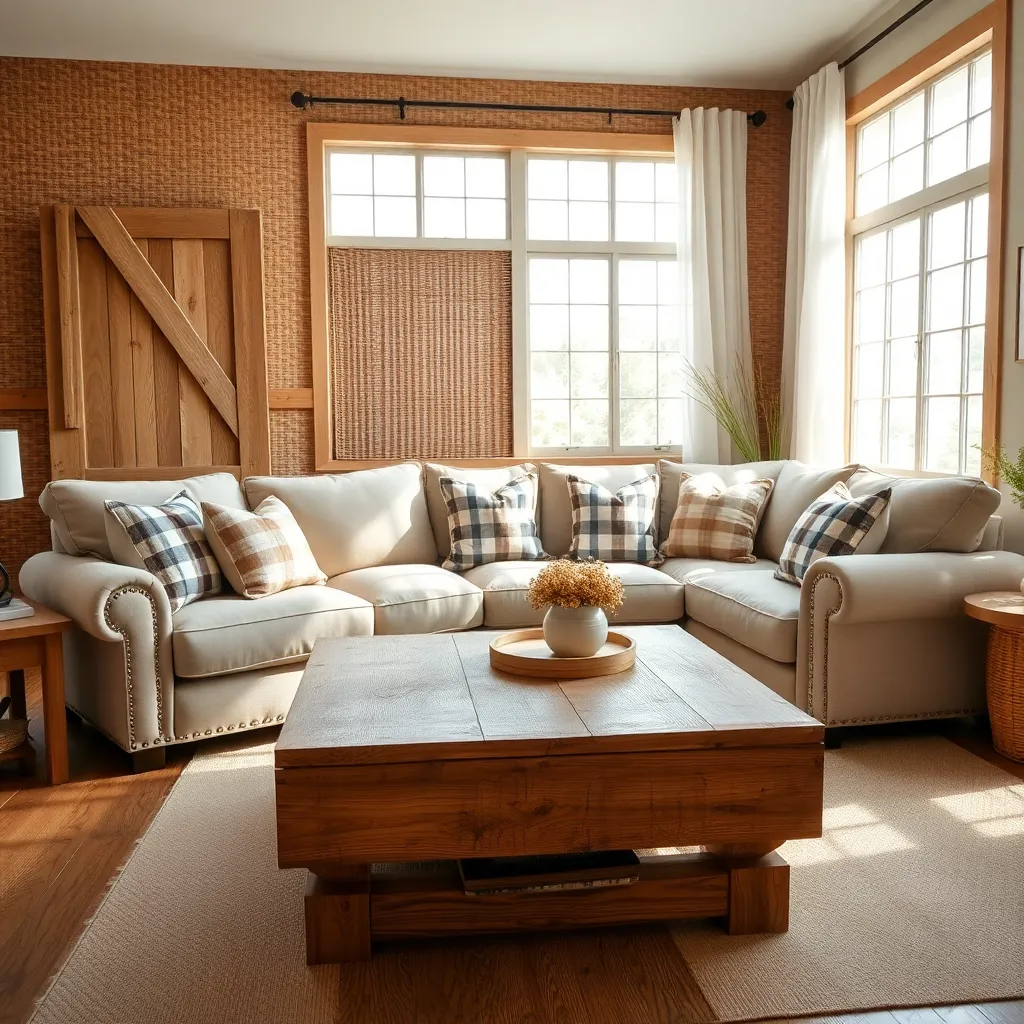
When incorporating reclaimed wood accents, start by selecting pieces that showcase the natural grain and imperfections, as these add character to your space. Consider using reclaimed wood for elements like coffee tables, shelves, or wall art, which can serve as focal points in your rustic farmhouse design.
For a beginner, a simple yet impactful way to introduce reclaimed wood is through a feature wall. You can create a stunning backdrop by installing vertical or horizontal planks, which can be left natural or whitewashed to match your color scheme.
Advanced decorators might experiment with mixing different wood tones and textures to create a more layered and dynamic look. Pairing reclaimed wood with contrasting materials like metal or glass can add depth and prevent the room from feeling too heavy or monotonous.
Placement is crucial for maximizing the visual impact of reclaimed wood accents. Position larger pieces, like a reclaimed wood dining table, centrally in a room to anchor the space, and balance it with softer elements like cushions or area rugs in neutral tones.
Choose Weathered Metal Fixtures
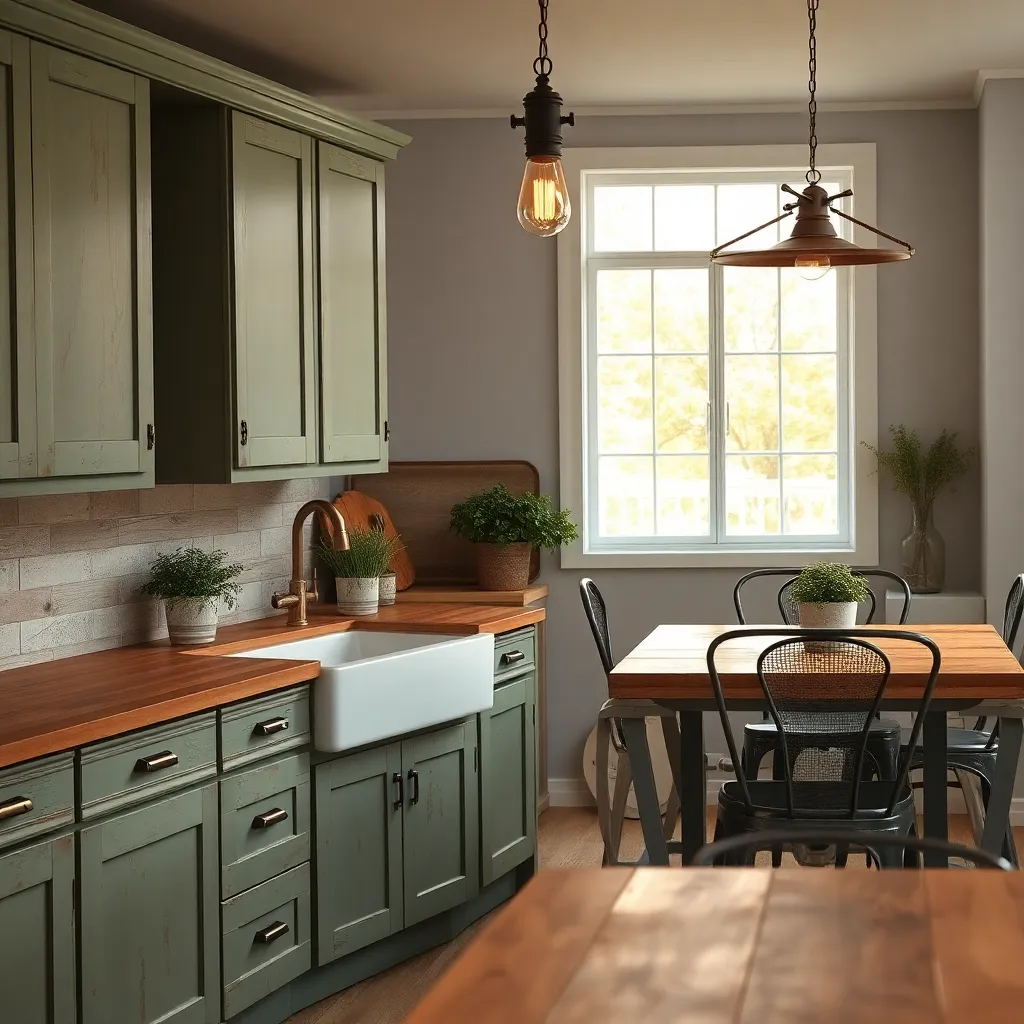
Weathered metal fixtures can infuse a rustic farmhouse style with a distinct charm and timeless appeal. Choose fixtures with a patina or aged finish that complement the warm tones of reclaimed wood accents in your space.
To achieve an authentic look, consider using materials like iron, bronze, or copper, which naturally develop a weathered appearance over time. Pair these metals with soft lighting to create a cozy and inviting atmosphere that exudes rustic warmth.
When selecting weathered metal fixtures, think about incorporating them in key focal areas such as over kitchen islands or in entryways. This placement not only enhances the farmhouse aesthetic but also highlights architectural details and creates visual interest.
For a more cohesive look, integrate metal elements throughout the room by matching your fixtures with other metal accents, such as cabinet handles or picture frames. This approach can tie the space together and reinforce your chosen theme with subtle elegance.
Layer Natural Textures Luxuriously
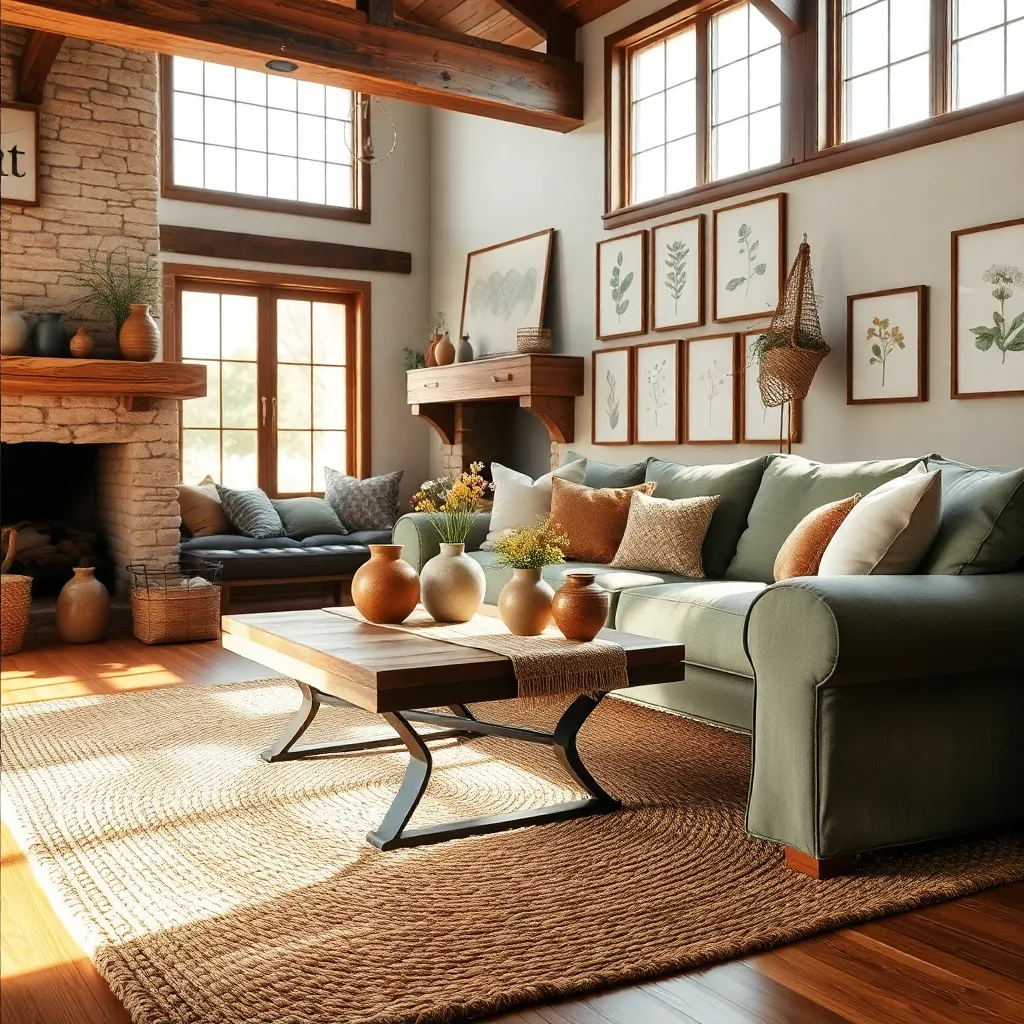
To create a sense of warmth and depth in your rustic farmhouse design, layering natural textures is key. Start by incorporating materials like reclaimed wood, stone, and linen to add authenticity and richness to your space.
Consider using a jute or sisal rug as a foundation to ground your room and provide a tactile experience underfoot. Pair this with a chunky knit throw or a handwoven blanket draped over a sofa or chair for added coziness.
For a more sophisticated touch, mix in some leather and wool accents. Leather furniture or decor items can add a touch of luxury, while wool pillows or blankets introduce warmth and comfort.
Advanced decorators might experiment with texture contrasts by blending smooth and rough surfaces. Use a combination of smooth marble or granite countertops with rustic wooden cabinets to create visual interest.
Add Vintage Farmhouse Décor Pieces
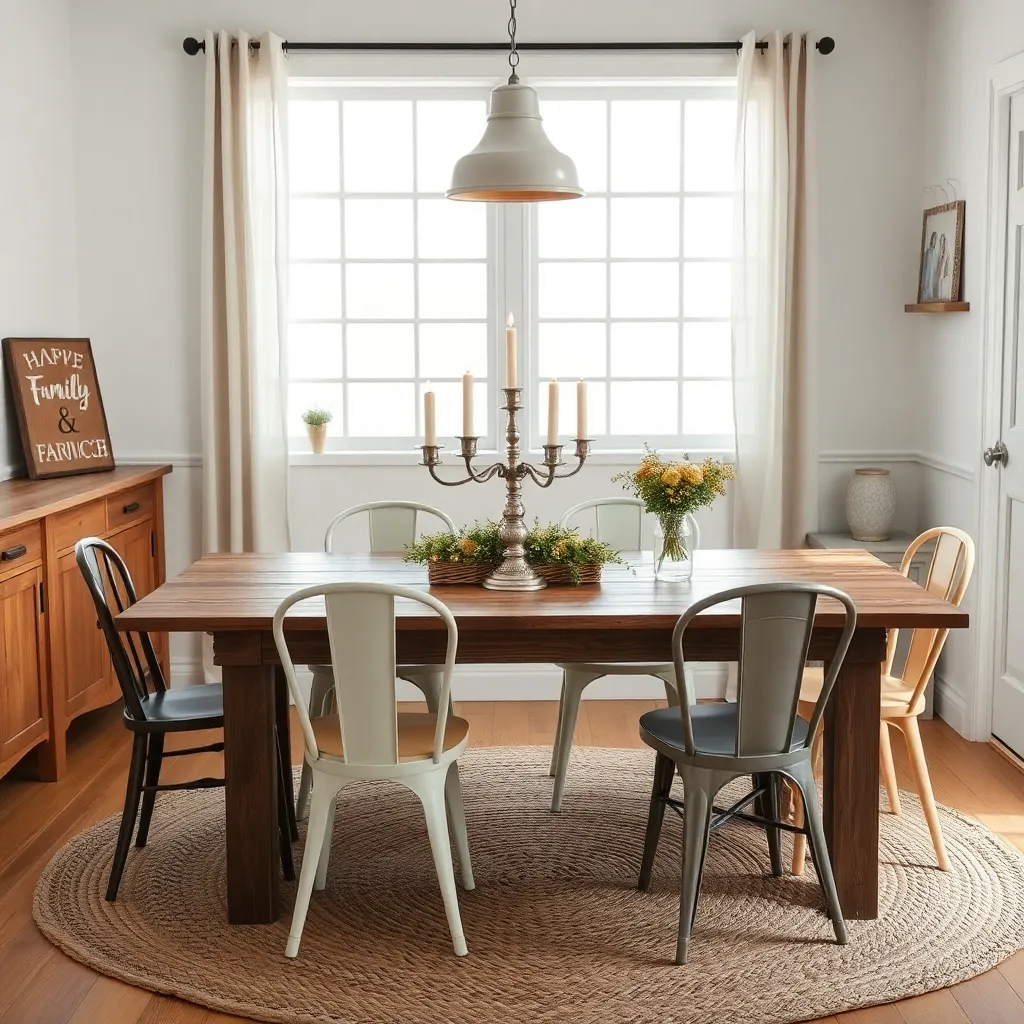
Embrace the charm of vintage farmhouse décor by incorporating pieces that tell a story. Start by visiting local flea markets or antique shops to find unique items like a weathered wooden ladder or a distressed metal milk jug. These elements can serve as conversation starters and add a lived-in feel to your space.
Consider using vintage furniture pieces, such as an old farmhouse table or a set of mismatched dining chairs, to bring warmth and character into your home. Pair these with a neutral color palette of whites, creams, and muted pastels to allow the vintage items to shine while maintaining a cohesive look.
Layering vintage textiles is an excellent way to add depth and comfort to your farmhouse style. Incorporate items like hand-woven rugs, quilted throws, or linen tablecloths to create a cozy, inviting atmosphere. These textiles not only add texture but also introduce softness and warmth to the room.
For a more advanced touch, use vintage architectural elements as focal points. Think about installing an old barn door as a sliding partition or using reclaimed wooden beams for shelving. These features can elevate your space, providing a rustic authenticity that blends seamlessly with contemporary farmhouse aesthetics.
Opt for Neutral Color Palettes
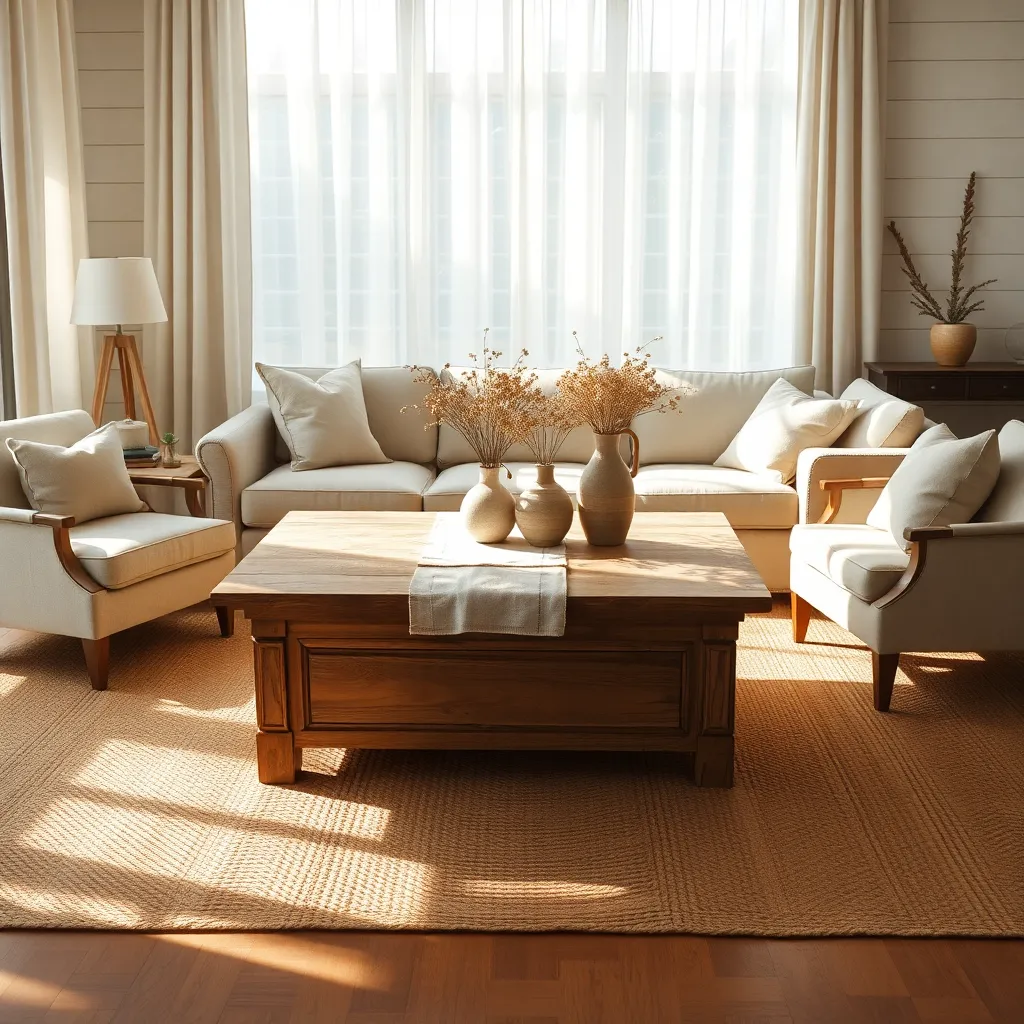
Neutral color palettes form the backbone of a rustic farmhouse design, offering a calming and versatile backdrop. Consider using shades like soft whites, creams, and taupes, which not only enhance natural light but also provide a serene environment.
Choosing the right furniture can amplify the effect of a neutral palette. Opt for pieces crafted from natural materials such as wood or linen, which complement the earthy tones and add texture to your space.
Experiment with layering different shades of neutral colors to create depth and interest without overwhelming the room. For instance, you can pair a beige sofa with white throw pillows and a taupe rug for a cohesive yet dynamic look.
To add a touch of sophistication, incorporate metallic accents like bronze or aged gold through fixtures or decorative items. These elements can subtly enhance your neutral palette, adding a modern twist to the rustic farmhouse style.
Display Mason Jars Creatively
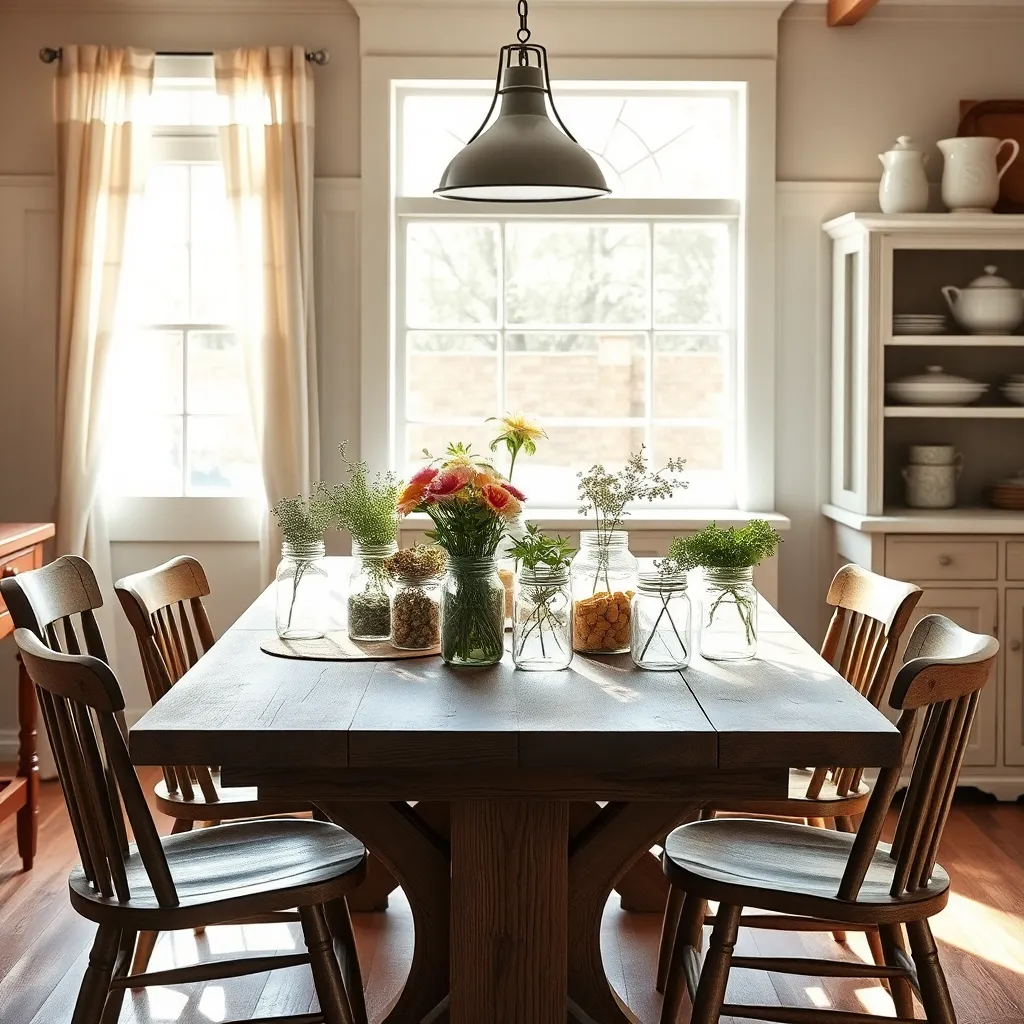
Mason jars are a staple in rustic farmhouse decor, offering both functionality and charm. Start by using them as vases for fresh or dried flowers, which can easily be placed on a kitchen table or a windowsill for a touch of nature indoors.
For a more advanced touch, consider creating a mason jar chandelier. This involves attaching multiple jars to a wooden plank, fitting them with bulbs, and hanging the piece over a dining area for a warm, ambient glow.
Alternatively, use mason jars for organizing kitchen staples like grains or spices. Arrange them on open shelves, using their transparent quality to add a hint of rustic practicality while displaying the colorful contents inside.
To personalize your jars, wrap burlap or twine around the necks, or paint them in soft pastels that match your existing color palette. This simple step can make them fit seamlessly into your overall decor while adding a handcrafted touch.
Install Shiplap for Wall Charm
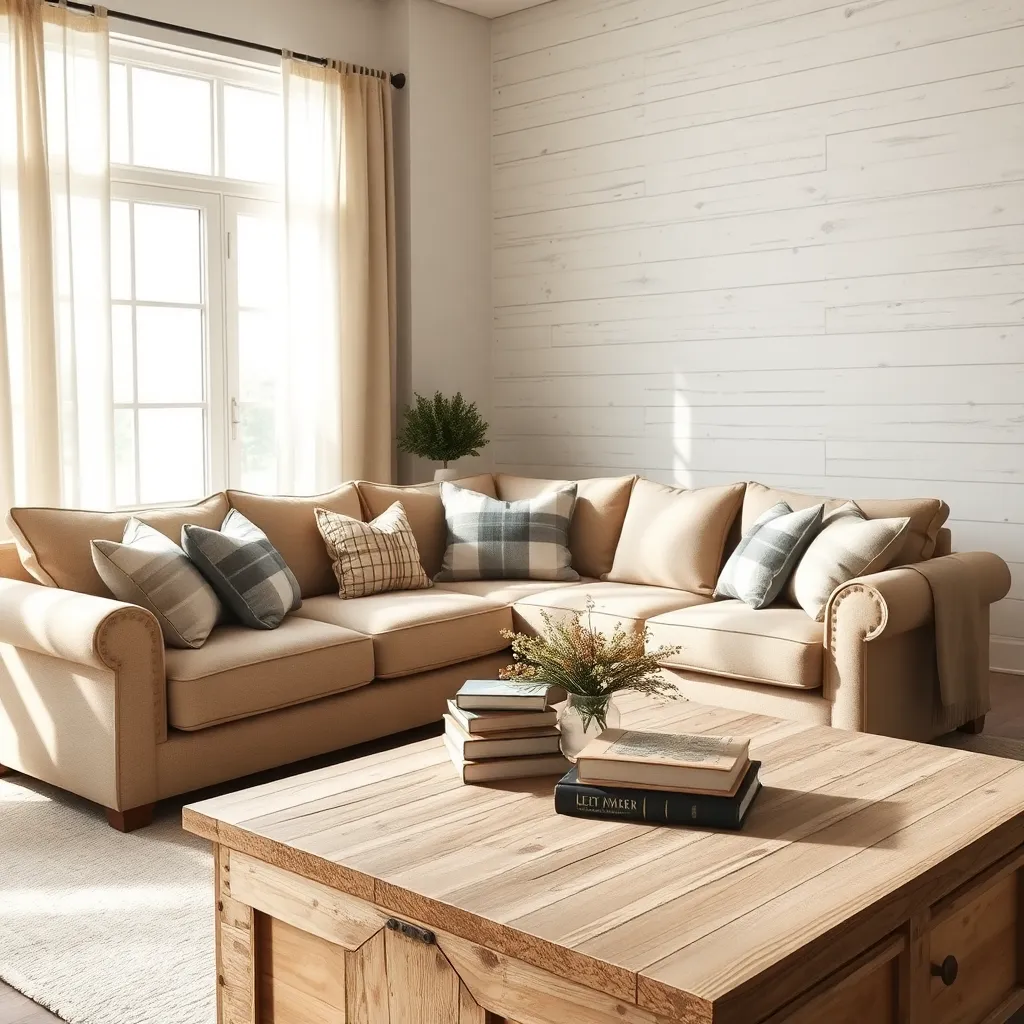
To infuse your walls with rustic charm, consider installing shiplap. This versatile wood paneling not only adds texture but also creates a cozy, farmhouse aesthetic.
Start by selecting the right type of wood, such as pine or cedar, which are both durable and offer a beautiful grain. Paint or stain the shiplap in colors like white or soft gray for a classic look, or even experiment with darker hues for a more dramatic effect.
When installing shiplap, ensure the panels run horizontally to broaden the appearance of your space. Pay attention to even spacing between each board to maintain an authentic, seamless look that can transform any room.
For beginners, using a nail gun can simplify the installation process, while advanced DIYers might choose to create a unique pattern by mixing board sizes. Finish the look with complementary decor, such as wrought iron fixtures or vintage-inspired artwork, to enhance the rustic vibe.
Use Distressed Furniture Styles
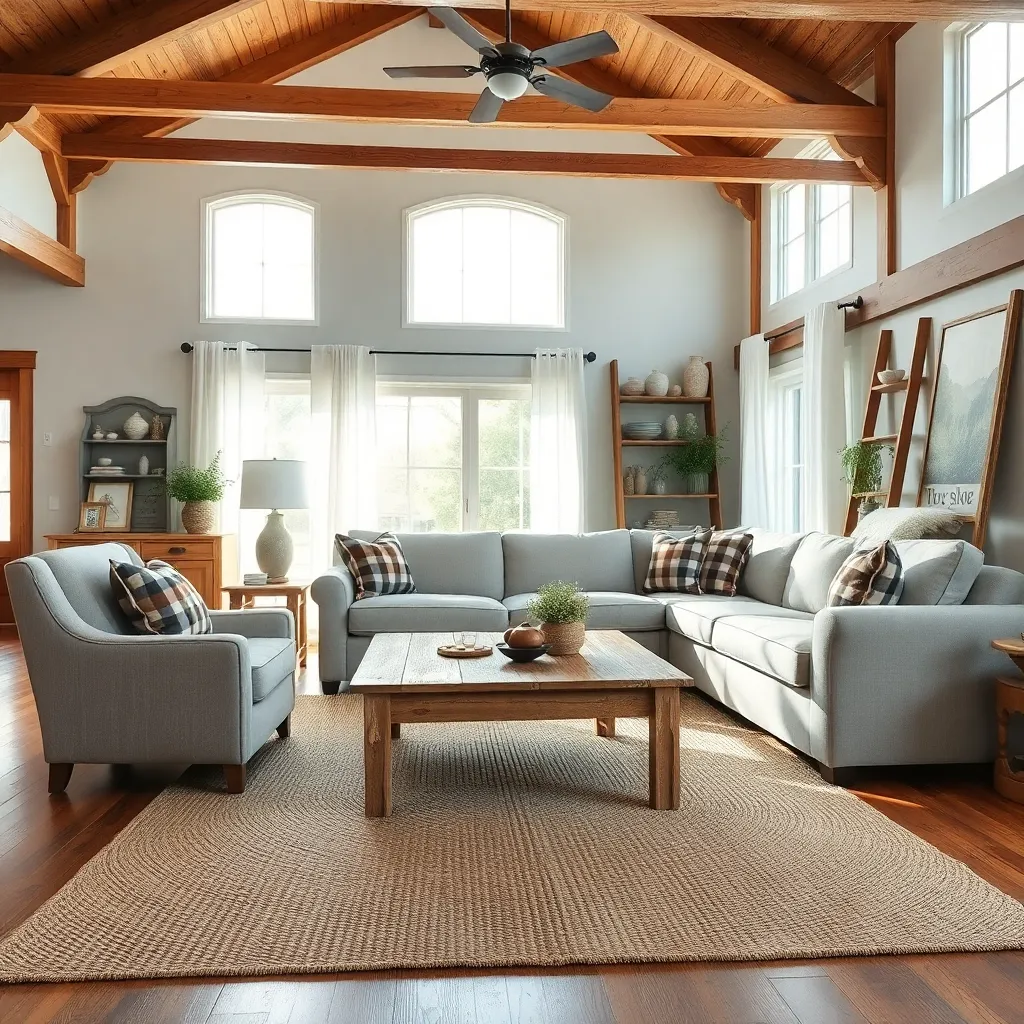
Distressed furniture is a hallmark of the rustic farmhouse style, bringing a sense of history and warmth to any space. To achieve this look, consider pieces that show signs of wear, such as chipped paint or weathered wood, which add character and authenticity to your home.
When selecting distressed furniture, opt for neutral tones like whites, greys, and soft browns that blend seamlessly with a rustic color palette. Combining these hues with natural materials like wood and metal can create a balanced and cohesive look that feels both cozy and inviting.
Placement of distressed pieces is crucial for maintaining a harmonious design. Use a distressed wooden coffee table or sideboard as a focal point in your living room, complementing it with softer textures like plush rugs and linen throws for added warmth.
For a more advanced touch, consider mixing distressed furniture with modern elements to create a unique juxtaposition. This can be achieved by pairing a weathered dining table with sleek, contemporary chairs, or by layering a distressed mirror over a modern console table.
Feature Industrial Lighting Elements
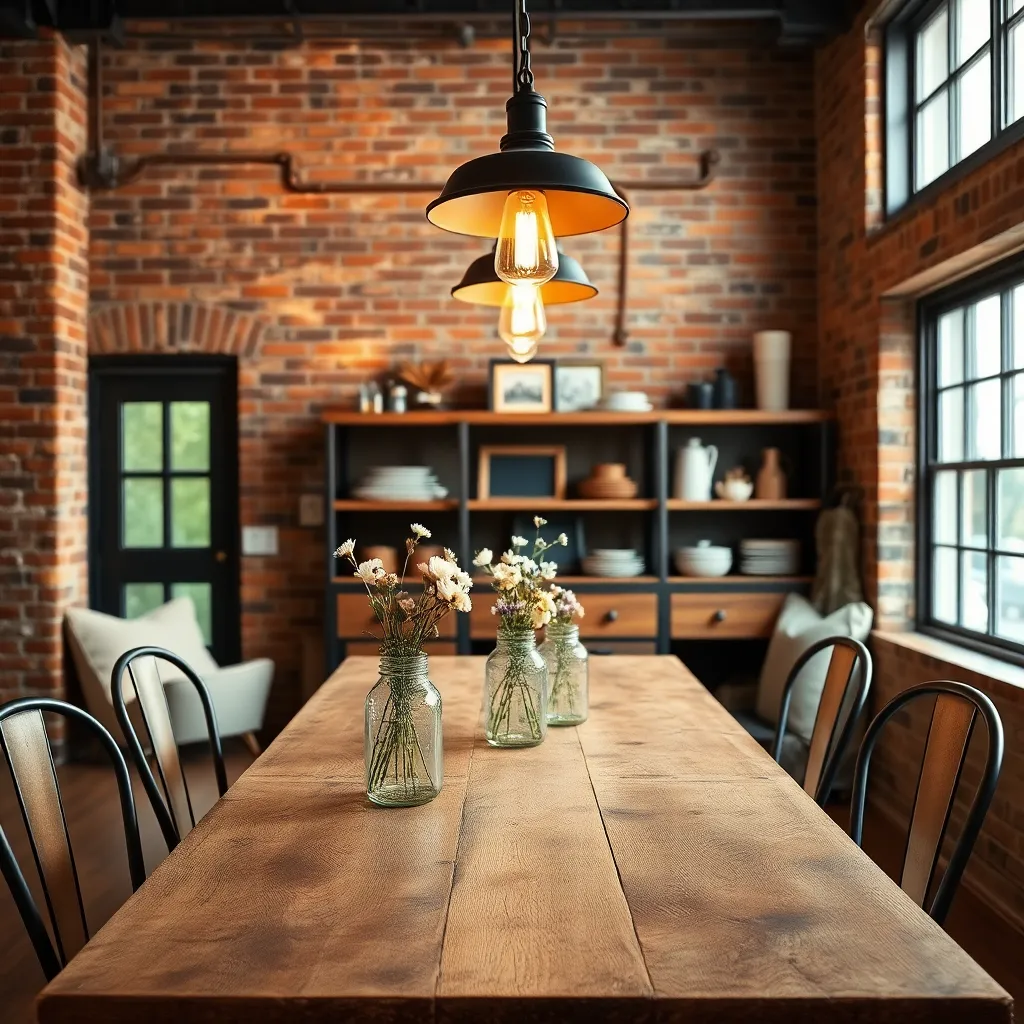
To create an authentic rustic farmhouse atmosphere, incorporating industrial lighting elements can be a game-changer. Consider using vintage-inspired pendant lights with exposed bulbs to add character and warmth to any room.
For a fresh take, try mixing materials like metal and wood in your light fixtures. A chandelier with a wrought iron frame and wooden accents can provide both a rustic charm and an industrial edge.
Position these lighting pieces strategically over dining tables or kitchen islands to highlight gathering spaces. This not only enhances functionality but also draws focus to the heart of your home, making it more inviting.
For those with a flair for advanced design, consider layering different lighting sources to create depth. Pair a large industrial fixture with smaller, adjustable wall sconces to balance light and create a cozy, welcoming ambiance.
Incorporate Cozy Woven Textiles
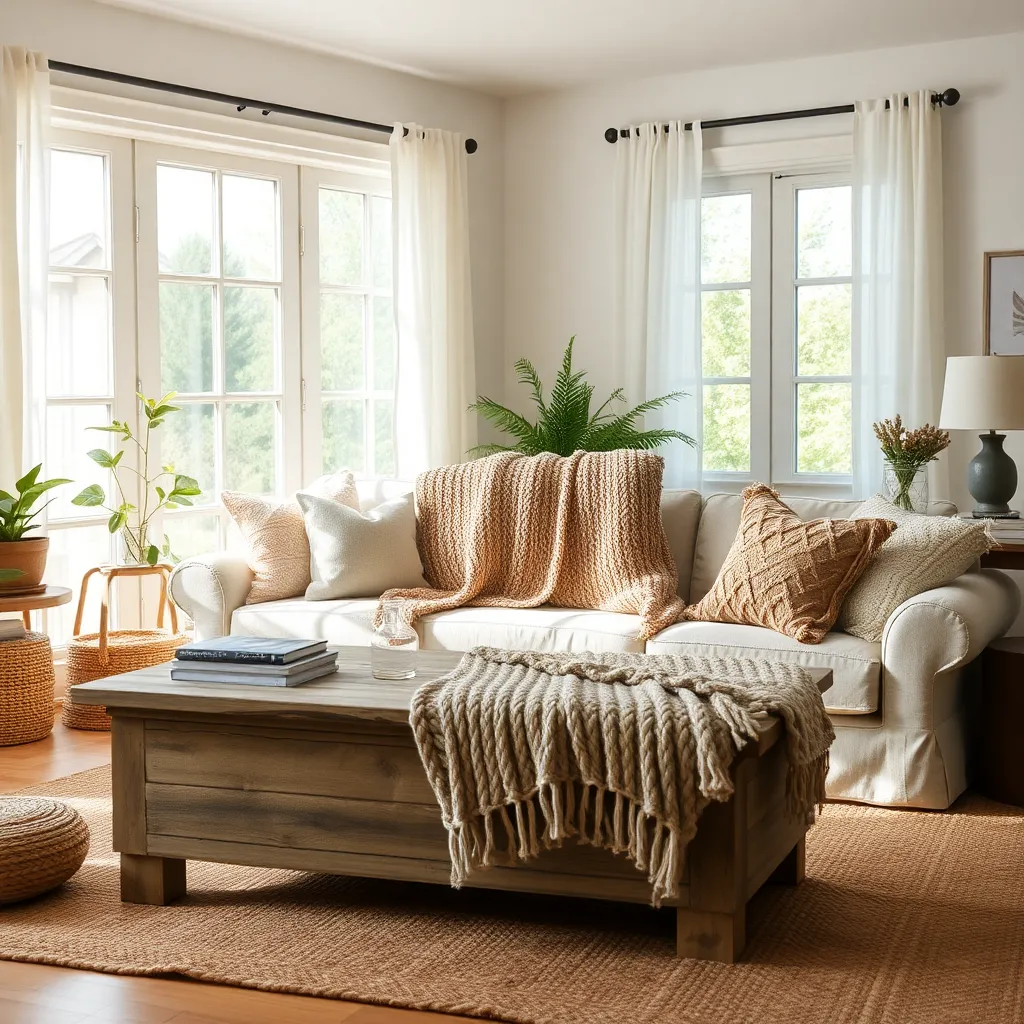
To create a warm and inviting rustic farmhouse aesthetic, incorporating cozy woven textiles is essential. Start by selecting soft, natural fibers such as cotton or wool for your throws and blankets, which can be draped over couches or chairs for an instant touch of comfort.
Layering textiles is key to achieving that cozy, lived-in look. Consider using a mix of textures by pairing a chunky knit throw with a smooth linen cushion to add depth and interest to your seating areas.
For a more advanced touch, experiment with a subtle mix of patterns in your textiles. Opt for classic farmhouse motifs like gingham or stripes in your curtains or pillow covers, ensuring they complement the overall color scheme of your room.
Strategically place woven rugs under key pieces of furniture like the dining table or coffee table to ground the space. Choose neutral tones or earthy colors to maintain a cohesive flow throughout the room while enhancing the rustic charm.
Conclusion: Growing Success with These Plants
As you embark on your journey to transform your living space with these 10 rustic farmhouse decorating ideas, you’ll discover that each concept reflects a deeper understanding of relationships in the home. From embracing natural elements and focusing on functionality to creating cozy nooks and incorporating vintage finds, these tips are designed to foster a warm and inviting atmosphere that mirrors the heart of a nurturing relationship. By blending textures, mixing old and new, and personalizing your space, you create a haven where love and connection can thrive.
To take immediate action, choose one room in your home to start implementing these ideas today. Begin by introducing one or two rustic elements that resonate with you, and watch as your space begins to transform into a reflection of your relationship goals.
Remember to bookmark this article for future reference, as it’s a treasure trove of inspiration that will continue to guide you in creating a home where meaningful relationships flourish. As you cultivate this environment, you’ll find that your relationships, much like your newly decorated space, will become richer and more fulfilling. Here’s to building a home—and a life—filled with warmth, love, and endless possibilities.
